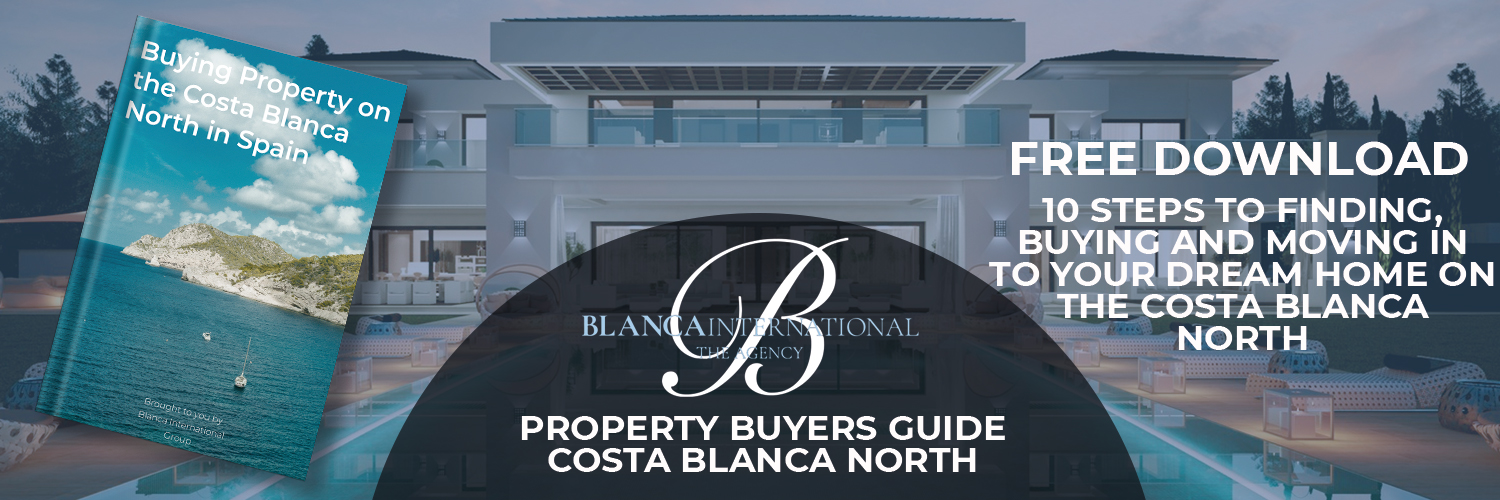Looking to leave the beach behind and spend some time exploring Javea?
The old town of Javea has been settled for more than 1,000 years and you can really feel the history as you walk through its narrow old town streets. If you look a little closer you’ll find amazing stories at every street corner.
We’ve selected 5 architectural features and 5 important buildings below to help you understand Javea’s architecture a little better.
It’s just a taste of what you’ll find when you take a look around!
5 Key Architectural Features in Javea
1. Tosca sandstones

Does your town often have news of people stealing stones?
The honey-coloured sandstone called tosca is a prized building material after quarrying was prohibited in 1972. Constructors used to carve them out of a sea cave below the San Antonio headland (Cova Tallada) but now there’s only an expensive second-hand market.
A few years ago, the Guardia Civil recovered 50 stones stolen from a restaurant and valued at thousands of euros.
Javea has the biggest shorefront deposits of tosca sandstone along the entire coastline of the Valencian region. Tosca stone is certainly the most famous aspect of Javea architecture.
It lends itself well to carving and you’ll notice the craftsmanship in many pillars, doorways and window frames in the old town.
To its downside the pores in tosca cause humidity problems in many buildings in the old town.
2. Riurau

The riurau is an essential piece of Javea architecture which has an interesting link to Britain.
A wealthy businessman called Alfred Wholesale changed Denia and Javea’s fortune when he landed in 1869 from Manchester. He began exporting raisins from the Moscatel grape to the UK, Canada and the United States.
A large number of grand houses in Javea were built from the profits of the trade.
The riurau was where they made their wealth.
A riurau is a stone shelter with a series of arches called ‘eyes’ and a low tiled roof. They’re usually a detached structure – like the Riurau dels Catalá d’Arnauda in the old town of Javea or the riurau in Jesus Pobre where farmer’s markets are held on Sundays in the summer.
But many farm houses have a riurau attached to the property.
The riurau is an architectural feature almost only found in the Marina Alta region surrounding Javea. They were used to protect grapes from rain and dew as they dried out to become raisins – panses in Valencian.
Phylloxera outbreaks decimated harvests in the early 20th century and soon seedless California raisins gradually became the consumer’s choice.
3. Hand of Fatima door knockers
One of the few Islamic symbols still present in Javea’s Christian culture.
Older houses in the old town of Javea have elaborate door knockers – a common one features a hand with a ring on the middle finger. This is called the Mano de Fátima and it’s inherited from Moorish times as a protection for the home.
Up until the expulsion of the Moors between 1609-1613 at least a third of the Valencian region was made up of Moorish villages.
The port that saw the most Moors sent via boat to North Africa (over 50,000) was Denia next to Javea.
Moorish symbols like the Hand of Fátima were banned in 1526 on order of the Rey Carlos V. But 500 years later the symbol is still present on houses.
4. Religious niches
You’ll see numerous recesses or niches built into the walls and façades around Javea.
These house a saint. Usually it’s the saint who the street is named after, but the saints were also placed by former gates to the old town of Javea for protection. For example, the niche of Javea’s patron saint San Sebastián is located near one of the entrances to protect Javea from plagues in the 16th-17th centuries.
Every year on the feast of San Sebastián locals will visit the niche with flowers.
Javea was recorded by historians to have strangely skipped the plague while neighbouring Denia suffered major outbreaks. Worshippers believed it was the protection of San Sebastián who is depicted shot with arrows.
5. Fishing huts
People have been fishing in the waters around Javea for centuries.
Many people in Javea can still remember when the famous Cala Portitxol and the Cala Barraca could only be reached by foot. The beaches only had a few white fishing huts with bright blue doors.
Today, the iconic fishing huts on Cala Portitxol were named one of the ‘most Instagrammed spots in the Mediterranean’ by Condé Nast Traveler. They’ve become an architectural feature many think of when imagining Javea.
5 Important Buildings in Javea
1. Iglesia-Fortaleza de San Bartolomé

Have you ever seen a church and a military fort merged into one?
You will in Javea – the ‘fort-church’ of Saint Bartholomew is built with machicolations or holes for throwing stones onto attackers below. The oldest part of the church dates to 1304 but in 1513 it was rebuilt and walls 1m thick were put up all around the old town.
The reason was pirate attacks. Townspeople would take refuge in the church during a raid and defend themselves.
In the following century a series of defensive towers were built all along the Javea coastline too.
Javea townspeople alongside a garrison from Denia fought off and defeated the pirate Mami Arnaute – famous for capturing the writer of Don Quixote, Miguel de Cervantes – just off the coast of Cap Prim in 1584.
The latest pirate attack came in 1812 when 60 men entered through a hole in Javea’s town walls and burgled the richest houses.
2. Iglesia de Nuestra Señora de Loreto

If you wander into Javea’s church in the port, look up.
The ceiling was designed in 1967 to look like the underside of the biblical fishing boat with light streaming in around the edges. The church became well-known after a 45-minute BBC documentary compared its architectural importance to the cathedral of Brasilia and the Liverpool Metropolitan Cathedral.
There are also two interesting artefacts inside the church itself.
One is the tomb of Sor Catalina Bas, a 14th century female hermit who lived in caves on the San Antonio headland and built a chapel there in the saint’s honour.
The other is an icon of Our Lady of Loreto. In 1850 an Italian merchant ship was destroyed in a storm off Cap Prim. Fishermen from Javea found an icon of the Virgin of Loreto which they rescued and made their patrona.
3. Casa-Palau Antoni Bañuls

Javea’s museum – the Museo Soler Blasco – is worth visiting just for a look at the house.
The front is made entirely from tosca stones with carved window frames and pillars. The property was built for Antoni Banyuls in the 1600s while he was butler to the king Felipe III, but was reformed in the 1850s thanks to profits from the raisin industry.
The interior of the property shows the height of interior design in mid 19th century Spain.
It also houses numerous objects from Javea’s Iberian, Roman, Islamic, medieval and pre-modern history.
4. Ca Lambert
Ca Lambert is currently an exhibition space named after the German-Swiss painter André Lambert who moved to Javea in 1920.
(André Lambert had a house above the beach now called Cala del Tio Francés, or the French Guy’s Beach. Lambert was German but spoke French.)
Cla Lambert stands out for its brightly coloured façades. The property was built in 1857 by a local family who’d become rich from the agricultural trade. Alongside reporting raisins Javea also had a wheat industry evidenced by the 11 windmills to the north of the town, and Ca Lambert is another example of the wealth these industries created.
5. Casa Sardinera
Casa Sardinera was built in 2014 by the Valencian architect Ramon Esteve.
The multi-million euro property is notable for winning numerous architecture awards – including best residential pool in Europe. It has an infinity pool overlooking Portitxol and has been used in adverts for Mercedes-Benz, Dior, Zara and more.
While not a historical building Casa Sardinera represents Javea’s rise to the become the fifth most expensive town in Spain. Javea has the most expensive road in the Valencian Community – Calle Franz Josef Haydn – where property prices average €3.5 million.

